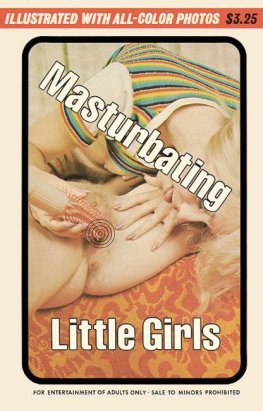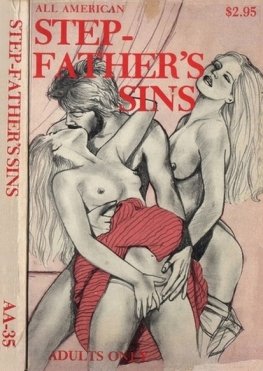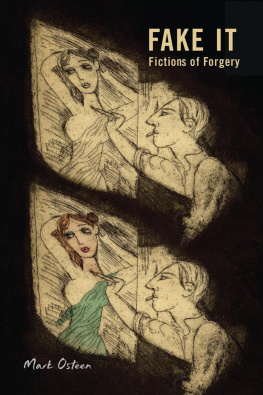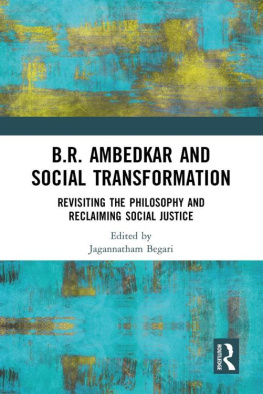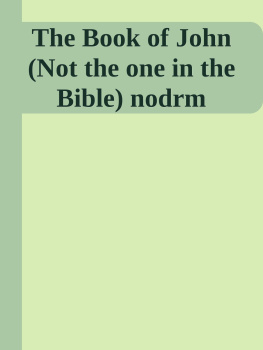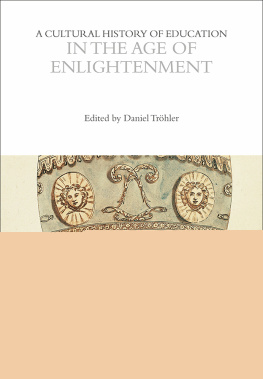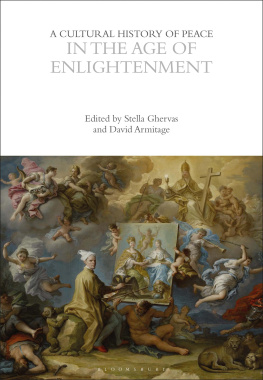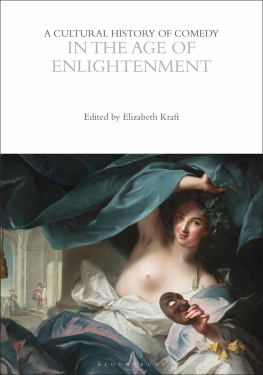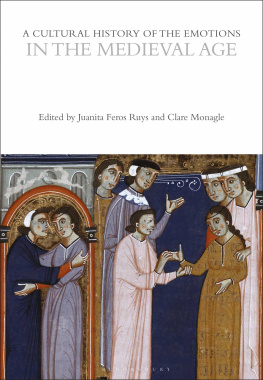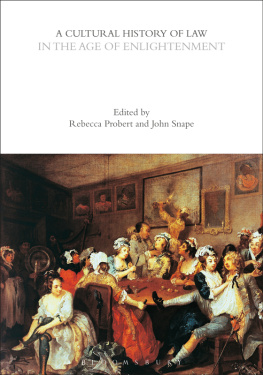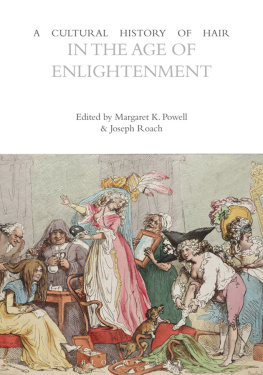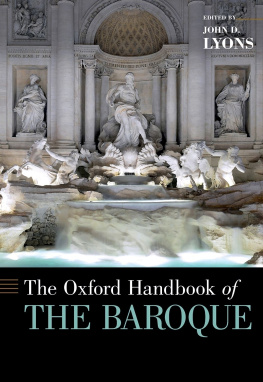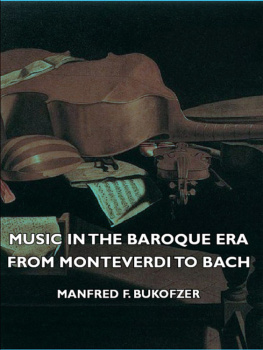A CULTURAL HISTORY
OF THE EMOTIONS
VOLUME 4
A CULTURAL HISTORY OF THE EMOTIONS
General Editors: Susan Broomhall, Jane W. Davidson, and Andrew Lynch
Volume 1
A Cultural History of the Emotions in Antiquity
Edited by Douglas Cairns
Volume 2
A Cultural History of the Emotions in the Medieval Age
Edited by Juanita Ruys and Clare Monagle
Volume 3
A Cultural History of the Emotions in the Late Medieval, Reformation, and Renaissance Age
Edited by Andrew Lynch and Susan Broomhall
Volume 4
A Cultural History of the Emotions in the Baroque and Enlightenment Age
Edited by Claire Walker, Katie Barclay, and David Lemmings
Volume 5
A Cultural History of the Emotions in the Age of Romanticism, Revolution, and Empire
Edited by Susan Matt
Volume 6
A Cultural History of the Emotions in the Modern and Post-Modern Age
Edited by Jane Davidson and Joy Damousi
CONTENTS
GENERAL EDITORS PREFACE
The General Editors, volume editors, and individual authors of this series have many organizations to thank for helping to bring it into existence. They gratefully acknowledge assistance from the Arts and Humanities Research Council (UK); the European Research Council Project, The Social and Cultural Construction of Emotions, University of Oxford, and its Director, Professor Angelos Chaniotis; the Leverhulme Trust; and the Wellcome Trust. Above all, the series has depended on support from the Australian Research Council Centre of Excellence for the History of Emotions (CE110001011). The project was conceived as a key part of the Centres collaborative research work and has benefited greatly from the generous help of its academic and administrative staff.
The General Editors also express their deep gratitude to the volume editors and authors for their time, expertise and gracious willingness to revise essays in the light of readers comments. Many other people helped in reading, tracing images and advising in various ways. Our thanks go to Merridee Bailey; Jacquie Bennett; Sophie Boyd-Hurrell; Frederic Kiernan; Mark Neuendorf; Fiona Sim; and Stephanie Thomson; and to the patient staff at Bloomsbury: Dan Hutchins; Claire Lipscomb; Beatriz Lopez; and Rhodri Mogford. We especially acknowledge Ciara Rawnsley, who as Editorial Assistant for the entire series has tirelessly helped authors and done indispensable and meticulous work on all aspects of the volumes preparation.
This series is dedicated to the memory of Philippa Maddern (19522014) who was an original General Editor, and an inspiring friend, mentor, and colleague to many of the contributors.
Introduction
What Were Emotions? Definitions, Understandings, and Contributions
KATIE BARCLAY, DAVID LEMMINGS, AND CLAIRE WALKER
The history of emotions is flourishing, not least for the seventeenth and eighteenth centuries. It is perhaps no surprise that a period long associated with critical shifts in the development of modernity, periods of contest, conflict, and evolution, provided ripe evidence for the role of emotion in producing societies, cultures and nations. Emotion is increasingly integrated into a wide range of historical domains, from political thought and state formation to family life and the development of individual psychologies. This volume brings together a range of current thinking on how emotion inflects and informs our understanding of the Baroque and the Enlightenment, periods marked not only by changing definitions of emotion but also by important emotional cultures that act as structures for the early modern world. As essays in this volume attest, emotion provides key insights not only into the origin, nature, and consequences of historical change, but also important continuities.
DEFINITIONS AND MEANINGS
It is during the period of the Baroque and Enlightenment that the word emotion, denoting passions and feelings came into usage, albeit in an irregular fashion. In the seventeenth century, emotion more commonly referred to movement or a disturbance, often in the form of political or civil unrest or agitation. The Oxford English Dictionary suggests it first appeared in John Shutes (fl. 155798) translation of Andrea Cambinis (1445/14601527) Two Very Notable Commentaries in 1562, which referred to great tumultes and emotiones between the king and nobility in France (OED: emotion, n.; Cambini 1562: 30). John Florio (15331625) employed the word in a usage denoting sentiment in his 1603 translation of Michel de Montaignes (153392) Essays, writing Nero taking leave of his mother, whom he sent to bee drowned, felt notwithstanding the emotion of that motherly farewell. Thomas Lodge referred to it in 1602 as this emotion or rage of iealousie in his translation of Josephus Works (OED: emotion, n.).
These early usages in English were derived from other languages, principally French. Ren Descartes (15961650) famously used motion to signify passion in his treatise Les Passions de lme (1649). And by the early eighteenth century, some English writers had adopted this sense of the word. It appeared in commentary on the levity and frivolity of modish womens behavior in December 1711 in no. 254 of the Spectator, where a sober correspondent extolled the retired life of a married wife, asserting I love to talk of him [i.e. her husband], and never hear him named but with Pleasure and Emotion (Bond ed. 1965: 2: 4889; OED: emotion, n.). However, despite its insertion in the English lexicon, emotion remained far less common than the more regular medieval and early modern words for feeling, like passions, appetites, desires, and affections.
The Scottish philosopher, David Hume (171176), in his Treatise of Human Nature (173940), used emotion in a manner which most closely resembles current usage (Dixon 2003: 104). Adam Smith (172390) did likewise in his Theory of Moral Sentiments (first published in 1759). Yet, according to Thomas Dixon, emotions in its modern sense as a theoretical category in the science of the mind was not invented until the early nineteenth century. Another Scottish philosopher, Thomas Brown (17781820), defined emotions as vivid feelings, arising immediately from the consideration of objects, perceived, or remembered, or imagined, or from other prior emotions (Dixon 2012: 340).
While emotion was gradually emerging in the eighteenth-century English lexicon, its definition was far from confirmed. Thomas Brown admitted to his students in Edinburgh that the words exact meaning is difficult to state in any form of words (Dixon 2012: 340). Brown employed emotion as a theoretical category in mental science, replacing the terminology current since at least Augustine of Hippo in Christian thinking, but which had originated in Greek and Roman Stoic philosophy. This understanding pitted the passions against calm reason or the affections (Dixon 2012: 339). Medieval theologians like Augustine, and later Aquinas, distinguished between the passions, appetites, lusts and desiresraw, unregulated feelings which might lead to sin and indicated a fallen souland the affections or enlightened motions of the rational soulcalm, useful feelings which inculcated love and compassion (Dixon 2003: 233; Dixon 2012: 339; Hultquist 2017: 71).




